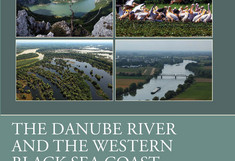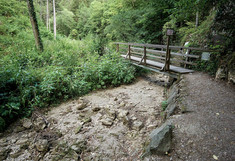IHG - News
A new book is out! The Danube River and The Western Black Sea Coast: Complex Transboundary Management
Edited by internationally recognised experts Jürg Bloesch, Bernd Cyffka, Thomas Hein, Cristina Sandu and Nike Sommerwerk, this volume is part of the renowned Elsevier series “Ecohydrology from Catchment to Coast”, which deals with the world's largest rivers.
This comprehensive book deals with the catchment area of the Danube, the second largest river in Europe, and the adjacent Western Black Sea coast. It deals in depth with the complex interplay between natural and social processes, focusing on typical Danube fish species, the sturgeons, that illustrate the intricate links between sea and river.
Thomas Hein is one of the Editors, and six scientists from the Institute significantly contributed to 6 of the 17 chapters.
More Details can be found here:
https://www.sciencedirect.com/book/9780443186868/the-danube-river-and-the-western-black-sea-coast
Declining River Levels in Austria: Expert Dr. Ronald Pöppl Calls for Urgent Action
Our group member, Dr. Ronald Pöppl, gave an interview to draw public and authorities’ attention to the ongoing decline of river water levels in Austria, especially during summer and in the eastern regions. He explains the main causes and stresses the urgent need for action. Dr. Pöppl calls for restoring floodplains, improving groundwater storage, reducing soil sealing, and promoting sustainable land use to help safeguard Austria’s water resources.
Learn more by clicking the link below: https://orf.at/stories/3397626/
New WebGIS Application: Vienna’s landscape evolution 200 – 2010 CE and historical hydraulic constructions

As part of several interdisciplinary projects on the environmental history of Vienna’s waterbodies, the past fluvial landscape was reconstructed from 200 CE onwards. Step by step the historical states of the landscape were compiled. The resulting maps of Vienna’s landscape evolution from 200 to 2010 provide a solid basis for interpreting the environmental conditions for Vienna’s urban development and help to localise certain riverine and urban landmarks relevant for the history of Vienna.
Visit https://arcg.is/1jqTSq


